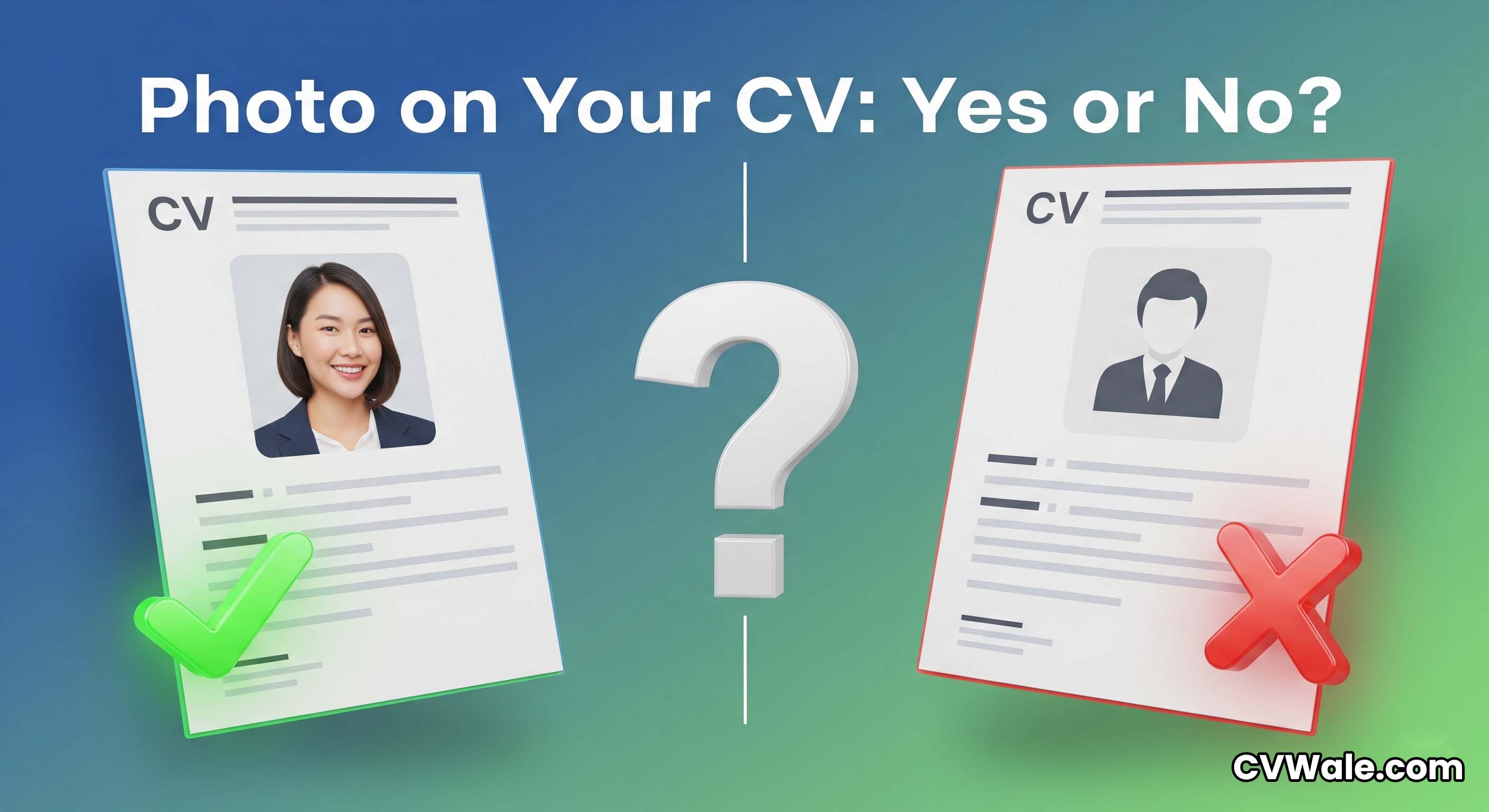Photo on CV in India: Yes or No? (A 2025 Recruiter's Perspective)

One of the most frequently debated topics in the world of resume writing is whether or not to include a photograph. If you search for advice online, you'll find conflicting answers. In Western countries like the USA, UK, and Canada, including a photo on your CV is a major mistake and can lead to immediate rejection due to strict anti-discrimination laws. However, in India, the norms are quite different and often less defined, leading to significant confusion among job seekers. Should you add a photo to make your CV more personal, or should you leave it out to appear more professional and avoid potential bias? This is a critical question in 2025. This article will provide a clear, balanced perspective from an Indian recruiter's point of view, breaking down the pros and cons to help you make the right decision for your job application.
The Case FOR Including a Photo (The Pros)
In the Indian context, there are several strong arguments in favor of including a professional photograph on your CV.
- Builds a Personal Connection: A photo humanizes your application. It helps the recruiter connect a face to the name and qualifications, making your CV more memorable among a sea of text-based documents.
- Meets Cultural Expectations: Unlike in the West, many recruiters and HR professionals in India are accustomed to seeing a photo on a CV. In many cases, it's an expected part of a "complete" profile. An application without a photo might be seen as incomplete or unusual, especially by more traditional companies.
- Enhances Your Professional Brand: A high-quality, professional headshot adds to your personal branding. It conveys confidence, professionalism, and shows that you pay attention to the details of your application.
- Essential for Certain Roles: For client-facing roles such as sales, marketing, public relations, hospitality, and HR, your appearance and professional demeanor are part of the job. In these industries, a professional photo is often considered essential.
The Case AGAINST Including a Photo (The Cons)
Despite the common practice, there are valid reasons why some experts advise against including a photo.
- Potential for Unconscious Bias: This is the most significant argument. While illegal, unconscious biases related to age, gender, ethnicity, and appearance can influence a recruiter's decision-making process. A photo provides personal information that is not relevant to your ability to do the job.
- Takes Up Valuable Space: On a tightly packed one-page resume, a photograph occupies precious space that could be used to highlight another skill, project, or achievement.
- Risk of an Unprofessional Photo: This is a major pitfall. Many candidates use low-quality, inappropriate photos (like selfies, cropped pictures from social media, or pictures in casual attire). A bad photo is far more damaging than no photo at all, as it immediately signals a lack of professionalism.
- Potential ATS Issues: While most modern Applicant Tracking Systems (ATS) can handle images, some older or poorly configured systems might struggle to parse a CV that includes a photo, potentially leading to scanning errors.

The Final Verdict for the Indian Job Market in 2025
So, what's the final verdict? For job applications within India, the consensus is: YES, you should include a photo, but ONLY if it is a high-quality, professional headshot.
The cultural expectation and the personal connection it builds generally outweigh the potential cons, provided the photo is professional. The key word here is professional.
What Makes a "Professional" CV Photo? A Checklist:
If you decide to include a photo, it must meet these standards:
- It's a Headshot: The photo should be from the shoulders up, with your face clearly visible.
- Neutral Background: Use a plain, non-distracting background (e.g., a solid light-colored wall like white, light grey, or light blue).
- Professional Attire: Dress as you would for an interview in your target industry. A formal shirt or a professional top is usually a safe bet.
- A Confident, Friendly Expression: A slight, natural smile makes you seem approachable and confident.
- Good Lighting: Your face should be well-lit with no harsh shadows. Natural light is often the best.
- High Resolution: The image must be clear and sharp, not blurry or pixelated.
- It's Recent: The photo should be a recent one that accurately represents what you look like now.
In conclusion, for the Indian job market, a professional photo on your CV is generally a smart move that can help you stand out and connect with recruiters. It completes your profile and meets a common expectation. However, the quality of the photo is non-negotiable. A bad photo will do more harm than good. Use a tool like CVWale, which provides a dedicated, well-designed space for your photo, ensuring your entire CV looks polished, modern, and professional.
